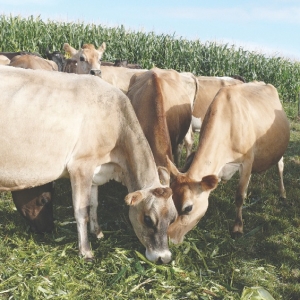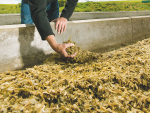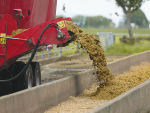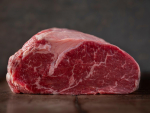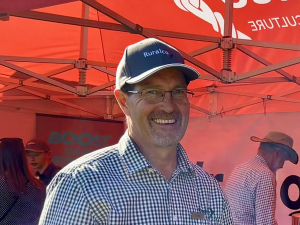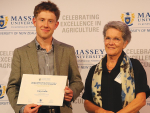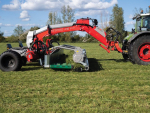DRY SUMMER conditions have led to pasture shortages in many dairy districts and we have had a number of inquiries from farmers who are considering early harvesting a portion of their maize crops.
The first management step in dry conditions is to reduce feed demand by removing culls, drying off high somatic cell count cows, low producers or young cows that are in poor condition, getting the young stock off the milking platform and putting the herd on once-a-day.
Once these options have been taken, attention turns to feeding the rest of the herd. The aim is to milk as many cows as possible for as long as possible without compromising either winter feed supplies or cow condition at calving.
Trials in the mid-1990s at Waimate West showed that very large responses to maize silage could be gained if cows which could have been dried off early were kept in milk.
Feed forage crops
If the cows are beginning to leave behind a grazing height of seven clicks or less then it is likely they are not getting enough feed from pasture alone. Feed any crops (e.g. brassica or forage sorghum) that have been grown for greenfeed purposes. Test for nitrates before you start grazing.
Feed stored feeds
It is important to have three weeks of stored feed on hand to feed the herd when it rains. After you have set aside three weeks of feed, look at how much stored feed you can afford to feed now.
Consider buying in feed
Consider buying in alternative feeds only if they can be sourced for less than the cost of greenfeed maize or if there is a lack of dietary protein.
In the six weeks prior to harvest, under “normal” conditions, maize silage will accumulate yield at around 200 - 300 kgDM/ha/day. Green-feeding reduces the crop yield and increases the cost per kgDM. As the crop gets closer to harvest, maize growth slows, the amount of yield you lose decreases and the case for greenfeeding maize gets stronger.
Example 1: A maize silage crop that would have yielded 25 tDM and cost 15 c/kgDM is greenfed at two weeks prior to normal harvest time. The greenfeed yields 22 tDM/ha and therefore feed costs 17 c/kgDM.
Greenfeeding maize
Greenfeed maize has an energy content of around 10 - 10.5MJME/kgDM and crude protein of 8 - 12%. Always feed the lowest-yielding maize crops first and test for nitrates before starting. There are a number of ways maize can be greenfed.
Grazing
This is the least advisable method as the wastage can be high. If there are no other options, feed maize silage behind an electric wire. If the plants have cobs make sure all the cows have access to the crop at once to reduce the risk of acidosis (grain overload).
Cut and carry
If you have your own harvester, cut the maize on a daily basis and cart it to the herd.
Contractor
If a contractor is required to undertake the harvest, either chop enough maize for a maximum of three days and leave it in a pile, or build a silage stack containing enough maize to last until the main crop is ready for harvest. If you are not compacting and sealing the maize, watch out for excessive heating and/or mould growth.
For more information on managing drought stressed maize see the Pioneer Technical Insight 344: Drought in Maize (http://www.pioneer.co.nz/maize-silage/product-information/silage-technical-insights/drought-in-maize-silage.html)
• Ian Williams is a Pioneer forage speciliast. Contact him at This email address is being protected from spambots. You need JavaScript enabled to view it.

